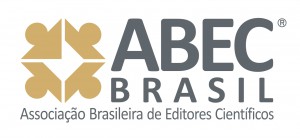Desenvolvimento de aplicativo móvel para apoio ao Agente Comunitário de Saúde prestar assistência ao binômio mãe-neonato na visita domiciliar
DOI:
https://doi.org/10.5216/ree.v24.70509Palabras clave:
Telenfermagem, mSaúde, Agentes Comunitários de Saúde, Recém-Nascido, Atenção Primária à SaúdeResumen
Objetivo: desenvolver um aplicativo móvel para suporte à prática assistencial do agente comunitário de saúde (ACS) junto ao binômio mãe-neonato. Métodos: estudo metodológico, desenvolvido junto aos ACS de um município do interior do estado do Paraná. Foram utilizadas as três fases preconizadas pelo Human-Centered Design, envolvendo a população de 280 ACS do município na primeira fase e testagem do aplicativo piloto, com 73 participantes representando as 74 equipes Estratégia Saúde da Familia. A avaliação final do aplicativo e da intervenção se deu em dois grupos focais, com a participação de 21 profissionais. Resultados: com base na identificação das principais necessidades dos profissionais para atendimento ao binômio mãe-neonato, derivou-se o arquétipo do aplicativo piloto, configurado em 55 telas, contemplando as diretrizes da Linha Guia da Rede Mãe Paranaense. Dentre as potencialidades do aplicativo se destacaram, o aumento do sentimento de segurança em relação às informações e condutas, por meio do suporte oferecido pelo aplicativo, e a facilidade em ilustrar as orientações à puérpera com uso dos recursos disponibilizados pelo mesmo. Conclusão: o estudo demonstrou viabilidade, aceitabilidade e usabilidade do sistema baseado na mobile health (mHealth) como suporte à atuação do agente comunitário de saúde junto ao binômio mãe-neonato.
Descargas
Citas
Muhe L M, McClure EM, Nigussie AK, Mekasha A, Worku B, Worku A, et al. Major causes of death in preterm infants in selected hospitals in Ethiopia (SIP): a prospective, cross-sectional, observational study. Lancet Glob Health [Internet]. 2019 [cited 2022 Dec 28];7(8):e1130-8. Available from: https://doi.org/10.1016/S2214-109X(19)30220-7
Prezotto KH, Oliveira RR, Pelloso SM, Fernandes CAM. Trend of preventable neonatal mortality in the States of Brazil. Rev. Bras. Saude Mater. Infant. [Internet]. 2021 [cited 2022 Dec 28];21(1):291-9. Available from: https://doi.org/10.1590/1806-93042021000100015
World Health Organization. Every Newborn: an action plan to end preventable deaths [Internet]. Geneva: World Health Organization, 2014 [cited 2022 Dec 28]. Available from: https://apps.who.int/iris/bitstream/handle/10665/127938/9789241507448_eng.pdf
World Health Organization. Reaching the every newborn national 2020 milestones: country progress, plans and moving forward. Geneva: World Health Organization, 2017 [cited 2022 Dec 28]. Available from: https://apps.who.int/iris/bitstream/handle/10665/255719/9789241512619-eng.pdf
Portaria nº 2.436, de 21 de setembro de 2017 (BR) [Internet]. Aprova a Política Nacional de Atenção Básica, estabelecendo a revisão de diretrizes para a organização da Atenção Básica, no âmbito do Sistema Único de Saúde (SUS). Diário Oficial da União. 22 set. 2017 [cited 2022 Dec 28];183(seção 1):68. Available from: http://www.in.gov.br/materia/-/asset_publisher/Kujrw0TZC2Mb/content/id/19308123/do1-2017-09-22-portaria-n-2-436-de-21-de-setembro-de-2017-19308031.
Tran NT, Portela A, Bernis L, Beek K. Developing capacities of community health workers in sexual and reproductive, maternal, newborn, child, and adolescent health: mapping and review of training resources. PLoS One [Internet]. 2014 [cited 2022 Dec 28];9(4):e94948. Available from: https://doi.org/10.1371/journal.pone.0094948
Agência dos Estados Unidos para o Desenvolvimento Internacional. Compêndio mHEALTH. Edição especial 2016: em grande escala [Internet]. Arlington: USAID, 2016 [cited 2022 Dec 28]. Available from: http://www.africanstrategies4health.org/uploads/1/3/5/3/13538666/2016_mhealth_final_cs6_pt_web_version.pdf
Holeman I, Kane D. Human-centered design for global health equity. Inf Technol Dev [Internet]. 2020 [cited 2022 Dec 28];26(3):477-505. Available from: https://doi.org/10.1080/02681102.2019.1667289
IDEO. The Field Guide to Human-Centered Design. Canadá: IDEO; 2015.
Secretaria de Estado da Saúde do Paraná. Linha Guia Rede Mãe Paranaense. 7ªed. Curitiba, PR: SESA; 2018.
Fry-Harris H, Beard BJ, Harrison T, Paudel P, Shrestha N, Jha S, et al. Smartphone tool to collect repeated 24 h dietary recall data in Nepal. Public Health Nutr [Internet]. 2018 [cited 2022 Dec 28];21(2):260-72. Available from: https://doi.org/10.1017/S136898001700204X
Zakus D, Moussa M, Ezechiel M, Yimbesalu JP, Orkar P, Damecour C, et al. Clinical evaluation of the use of an mhealth intervention on quality of care provided by Community Health Workers in southwest Niger. J Glob Health [Internet]. 2019 [cited 2022 Dec 28];9(1):010812. Available from: https://doi.org/10.7189/jogh.09.010812
Hanrieder T, Maray EM. Digitalzing community health work: a struggle over the values of global health policy. Historical Social Research [Internet]. 2021 [cited 2022 Dec 28];46(1):136-59. Available from: https://doi.org/10.12759/hsr.46.2021.1.136-159
Odendaal WA, Anstey Watkins J, Leon N, Goudge J, Griffiths F, Tomlinson M, et al. Health workers’ perceptions and experiences of using mHealth technologies to deliver primary healthcare services: a qualitative evidence synthesis. Cochrane Effective Practice and Organisation of Care Group, editor. Cochrane Database of Systematic Reviews [Internet]. 2020 Mar 26 [cited 2022 Dec 28]; Available from: https://doi.wiley.com/10.1002/14651858.CD011942.pub2
Diese M, Kalonji A, Izale B, Villeneuve S, Kintaudi NM, Clarysse G, et al. Community- based maternal, newborn, and child health surveillance: perceptions and attitudes of local stakeholders towards using mobile phone by village health volunteers in the Kenge Health Zone, Democratic Republic of Congo. BMC Public Health [Internet]. 2018 [cited 2022 Dec 28];18(1): 316. Available from: https://doi.org/10.1186/s12889-018-5186-2
Quandt M, Beinke T, Freitag M. User-Centered Evaluation of an Augmented Reality-based Assistance System for Maintenance. Procedia CIRP [Internet]. 2020 [cited 2022 Dec 28];93:921-6. Available from: https://doi.org/10.1016/j.procir.2020.03.053
Ferreira MNF, Pinheiro FDC, von Wangenheim CG, Missfeldt Filho R, Hauck JCR. Ensinando Design de Interface de Usuário de Aplicativos Móveis no Ensino Fundamental. Revista Brasileira de Informática na Educação [Internet]. 2020 [cited 2022 Dec 28];28:48-72. Available from: https://doi.org/10.5753/rbie.2020.28.0.48
McBride B, O’Neil JD, Trinh TH, Eni R, Nguyen CV, Nguyen LT. Improving health equity for ethnic minority women in Thai Nguyen, Vietnam: qualitative results from an mHealth intervention targeting maternal and infant health service access. J Public Health (Oxf) [Internet]. 2018 [cited 2022 Dec 28];40(suppl_2):ii32–41. Available from: https://doi.org/10.1093/pubmed/fdy165
Sanou AK, Jegede AS, Nsungwa-Sabiiti J, Siribié M, Ajayi IO, Turinde A, et al. Motivation of Community Health Workers in Diagnosing, Treating, and Referring Sick Young Children in a Multicountry Study. Clin Infect Dis [Internet]. 2016 [cited 2022 Dec 28];63(Suppl 5):S270-5. Available from: https://doi.org/10.1093/cid/ciw625
Satti FA, Ali T, Hussain J, Khan WA, Khattak AM, Lee S. Ubiquitous Health Profile (UHPr): a big data curation platform for supporting health data interoperability. Computing [Internet]. 2020 [cited 2022 Dec 28];102:2409-44. Available from: https://doi.org/10.1007/s00607-020-00837-2
Hategeka C, Ruton H, Law MR Effect of a community health worker mHealth monitoring system on uptake of maternal and newborn health services in Rwanda. glob health res policy [Internet]. 2019 [cited 2022 Dec 28];4:8. Available from: https://doi.org/10.1186/s41256-019-0098-y
Lee SH, Nurmatov UB, Nwaru BI, Mukherjee M, Grant L, Pagliari C. Effectiveness of mHealth interventions for maternal, newborn and child health in low- and middle-income countries: Systematic review and meta-analysis. J Glob Health [Internet]. 2016 [cited 2022 Dec 28];6(1):010401. Available from: https://doi.org/10.7189/jogh.06.010401
Chou VB, Friberg IK, Christian M, Walker N, Perry HB. Expanding the population coverage of evidence-based interventions with community health workers to save the lives of mothers and children: an analysis of potential global impact using the Lives Saved Tool (LiST). J Glob Health [Internet]. 2017 [cited 2022 Dec 28];7(2):020401. Available from: https://doi.org/10.7189/jogh.07.020401
Musabyimana A, Ruton H, Gaju E, Berhe A, Grépin KA, Ngenzi J, et al. Assessing the perspectives of users and beneficiaries of a community health worker mHealth tracking system for mothers and children in Rwanda. PLoS ONE [Internet]. 2018 [cited 2022 Dec 28];13(6):e0198725. Available from: https://doi.org/10.1371/journal.pone.0198725
Hackett K, Kazemi M, Lafleur C, Nyella P, Godfrey L, Sellen D. ‘It makes you someone who changes with the times’: health worker and client perspectives on a smartphone-based counselling application deployed in rural Tanzania. Health Policy Plan [Internet]. 2019 [cited 2022 Dec 28];34(4):307-15. Available from: https://doi.org/10.1093/heapol/czz036
Descargas
Publicado
Número
Sección
Licencia
Derechos de autor 2022 Revista Eletrônica de Enfermagem

Esta obra está bajo una licencia internacional Creative Commons Atribución 4.0.














